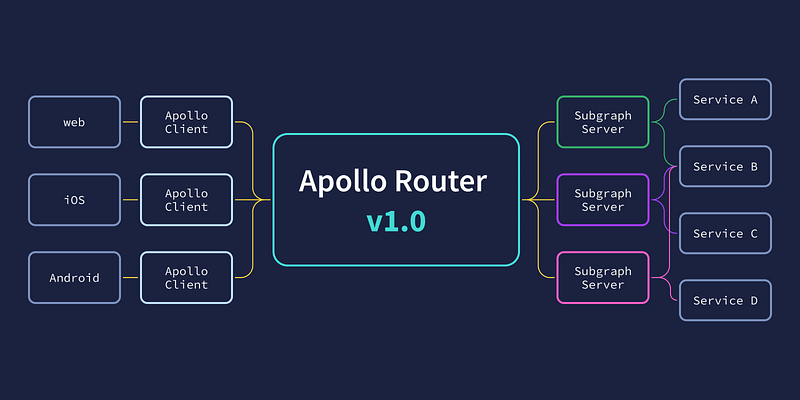What is GraphQL Federation?
GraphQL Federation is an architecture model that allows multiple GraphQL services, known as subgraphs or federated services, to be combined…

GraphQL Federation is an architecture model that allows multiple GraphQL services, known as subgraphs or federated services, to be combined into a single schema or API.
This unified data graph enables clients to query and receive responses from multiple services using a single request.
Apollo, a prominent company in the GraphQL ecosystem, pioneered this concept to facilitate the seamless integration of various microservices and data sources.
Core Principles of GraphQL Federation
- Composition: GraphQL Federation enables the composition of multiple, independently deployed GraphQL services into a single schema. This process is facilitated by the Federation Gateway, a server that communicates with each federated service, combines their respective schemas, and resolves incoming queries.
- Separation of Concerns: Each federated service can be developed, deployed, and maintained independently, which allows teams to work autonomously and focus on their specific domains.
- Schema Extensions: Federation enables the extension of types and fields across services, allowing for seamless data stitching and the resolution of related data from different services.
- Query Planning: When a query is received, the gateway generates a query plan, determining the optimal sequence of requests to federated services. This minimizes network overhead and ensures efficient data retrieval.
Benefits of GraphQL Federation
- Scalability: Federation enables organizations to scale their GraphQL APIs by distributing the responsibility for specific data domains across multiple services. This simplifies maintenance and allows for independent scaling of individual services.
- Flexibility: With the ability to extend types and fields across services, developers can easily add, modify, or remove data sources without affecting the entire schema.
- Increased Developer Productivity: The Federation promotes collaboration and accelerates development by separating concerns and allowing teams to work independently on their respective domains.
- Easier Data Integration: GraphQL Federation simplifies data integration from multiple sources, making consolidating and accessing information within a single query easier.
Getting Started with GraphQL Federation
Implementing GraphQL Federation in your project typically involves the following steps:
- Define Federated Services: Design and develop individual GraphQL services, ensuring each service is responsible for a specific domain. These services should use the
@keydirective to specify the primary key for each entity they manage. - Configure the Gateway: Set up a Federation Gateway that merges the schemas of federated services and handles incoming queries. Apollo Server provides a robust gateway implementation, which can be easily integrated into your project.
- Extend Types Across Services: Use the
extendkeyword to reference types from one service to another, allowing seamless data stitching. - Deploy and Maintain: Deploy your federated services and the gateway, ensuring they are kept up-to-date and that changes are coordinated across teams.
Conclusion
By breaking complex data domains into smaller, more manageable services, Federation promotes collaboration, improves developer productivity, and simplifies data integration.
To harness the full potential of GraphQL Federation, consider implementing it in your projects and experience the benefits firsthand.
Did you like the article? Leave a comment!
Follow me on Medium, LinkedIn, and Twitter.
All the best,
Luis Soares
CTO | Head of Engineering | Cyber Security | Blockchain Engineer | NFT | Web3 | DeFi | Data Scientist
#graphql #api #federation #data #scalability #documentation #architecture #software #architecture #application #softwaredevelopment #softwareengineering



